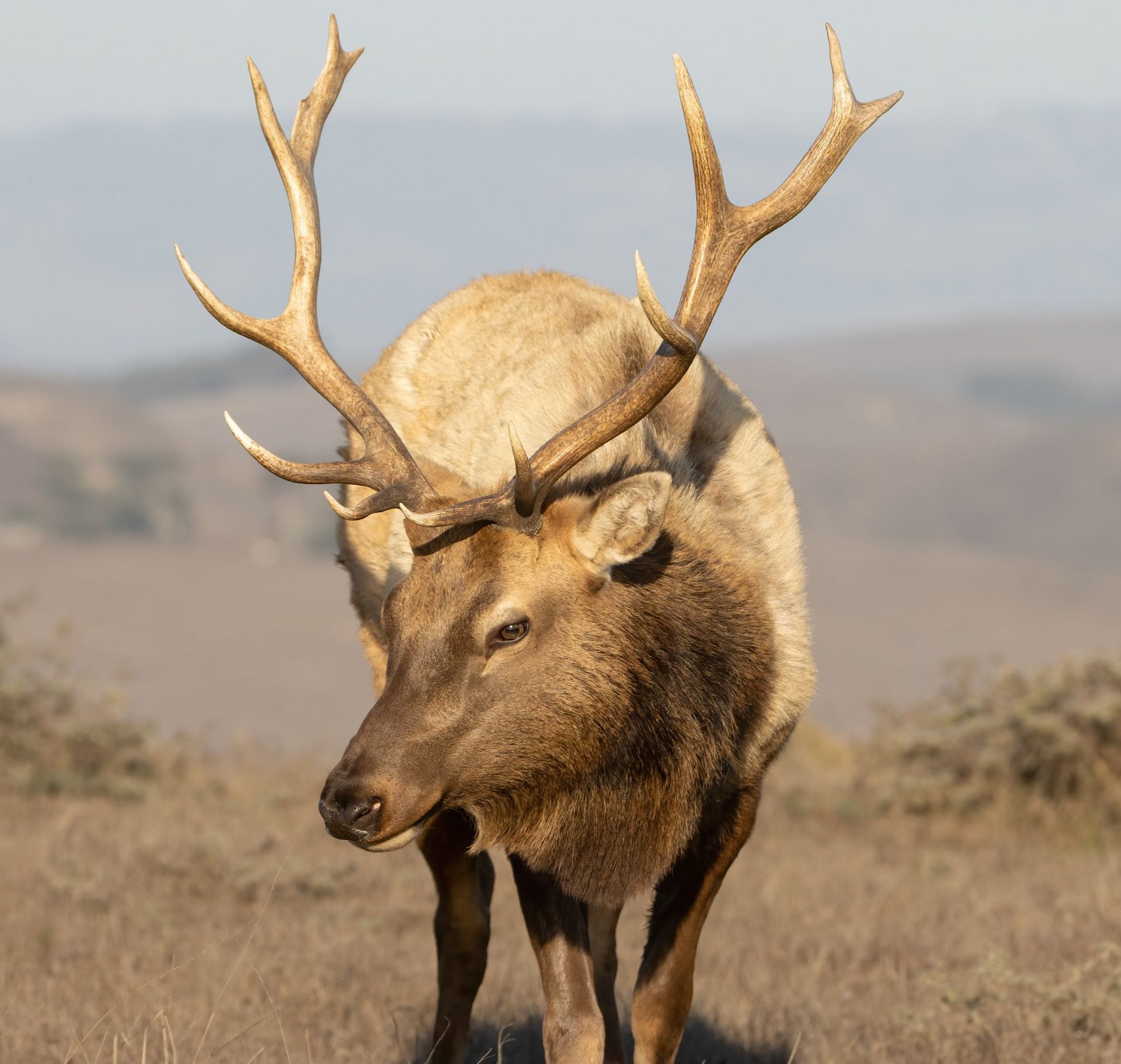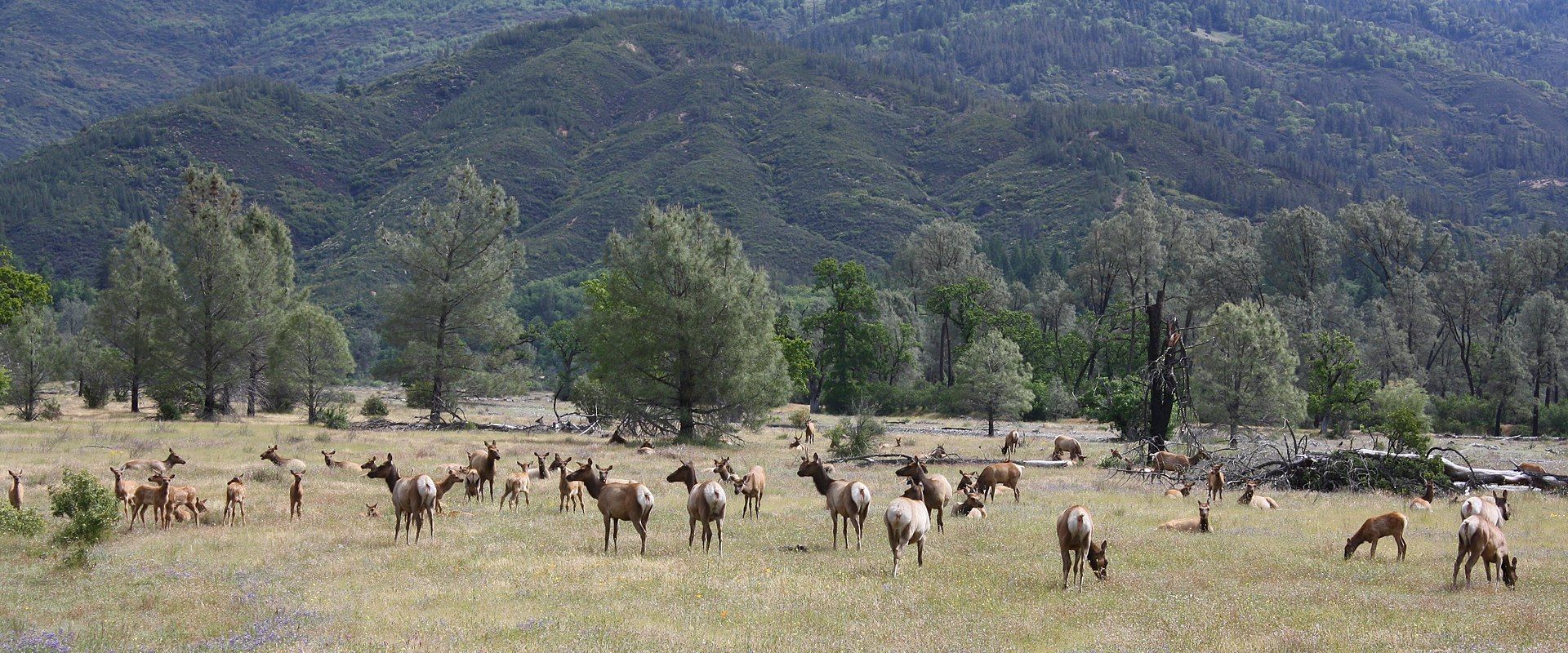My wife and I recently drove out to Cowboy Camp in western Colusa County, in an attempt to see the Aurora Borealis during the recent solar storm. While this was mostly unsuccessful, we did get to see a group of at least 20 Tule Elk grazing in the gathering dusk across Bear Creek. They were spectacular as always – they’re one of my favorite local animals and I think one of the most charismatic found in the Inner Coast Range.
Elk can be distinguished from black and white-tailed deer by their larger size, their mane of fur around the neck, and by their white rumps (Waipiti, a common name for North American Elk, is derived from a Shawnee word meaning white rump).
Tule Elk (Cervus canadensis nannodes) are one of three subspecies of elk found in California, with the others being the Roosevelt Elk (Cervus canadensis roosevelti) and the Rocky Mountain Elk (Cervus canadensis nelson). Tule Elk stand out from these and other North American Elk as they are the smallest subspecies, the only one that specializes on relatively dry ecosystems, and the only one that is endemic to California, meaning that they are found here and nowhere else.
When conditions are good, Tule Elk prefer to graze on grasses and annual forbs, but they will also browse shrubs and the lower branches of trees if grazing options are sparse. During the winter and spring months, female Tule Elk (cows) form their own herds apart from the males (bulls), who may band together in small groups or live alone. By late summer, when the antlers of the bulls have fully grown in for the year, the dominant bulls will join a group of cows and will mate with multiple partners while fending off rival males. It is during this period that bugling, the haunting call produced by bull elk, can most commonly be heard.








